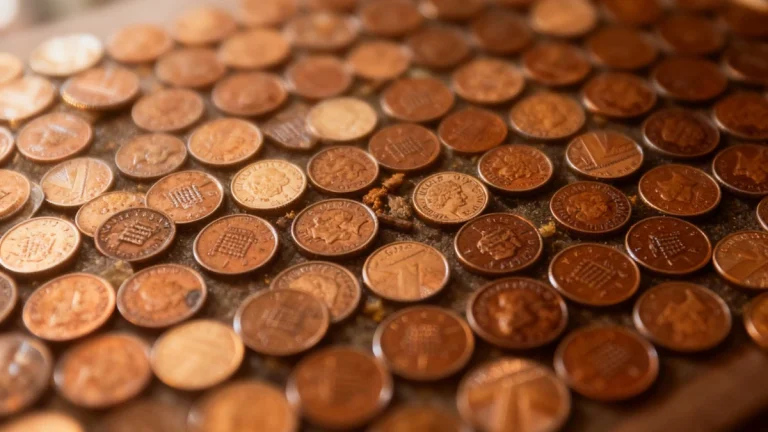Imagine a world where you’d have to put your bread on a scale and argue whether your payment in silver was the right weight—no small change, no coins, just the raw metal itself. That world was reality for centuries before a not-so-obvious mistake, a logistical headache, and the march of armies led to the shimmering invention of money as we know it.
The Ancient Silver Game: From Ingots to Coins
If handling coins and bills seems second nature, it’s only because we weren’t born in Achaemenid Persia, Phoenicia, or Pharaonic Egypt. Back then, silver was everywhere, yet almost nobody thought to mint it into coins. Instead, people traded silver by weight—picture bustling markets with balance scales at every stall. Metal itself was valuable, but it was not yet standardized for daily commerce.
But commerce around the Mediterranean thrived on this silver, stretching back to the Bronze Age (3000–1200 BCE). The real twist came in the 6th and 5th centuries BCE, when the need arose to pay enormous Greek armies of mercenaries. The old system—counting out precise weights—was a logistical nightmare, especially if you wanted to keep your hired muscle happy and not accidentally underpay someone wielding a sword.
Armies, Empires, and Alexander’s Coin Revolution
The story swiftly gets legendary. Imagine Alexander the Great after defeating Darius III in 331 BCE at Gaugamela. He marches into Susa, Persepolis, and Ecbatana and finds the greatest treasure troves of silver and gold ever amassed in the ancient world. Think 150 modern heavy trucks (or 60,000 mules, if your imagination enjoys a challenge) just to transport it all.
The Achaemenid Empire barely minted this silver into coins; they stored it as ingots, dishes, even statues. Macedonian conquerors, however, hastily transformed these treasures into coins based on Greek standards, such as the drachma. This coinage flood allowed Alexander and his successors—the Seleucids, the Ptolemies, the Antigonids—to pay their relentless armies and keep the wheels of war and administration turning.
Why Silver and Not Gold? Mining, Movement, and Mediterranean Markets
So why did silver take center stage rather than its glitzier cousin, gold, or even electrum? Silver struck a Goldilocks balance: rare, but not too rare, famously resistant to corrosion (and as historians gleefully note, unlike grain, the mice won’t eat it). It wasn’t needed for tools or weapons, so it played the exclusive role of wealth and sacred ornament.
Studies of lead isotopes reveal a twist worthy of detective fiction: much of this silver came from the region around the Aegean Sea—especially the famed Laurion mines near Athens, and sites in Macedonia and Thrace. Even earlier, the silver in the bracelet of Queen Hetepheres I (circa 2600 BCE, the mother of the pyramid-builder Khufu) came from the Cyclades islands south of Athens. No surprise, then, that when Herodotus described the tribute paid by different satrapies to the Persian king, the silver nearly always originated from these Aegean sources. Egyptians and Babylonians, who had no silver mines of their own, were forced to obtain it through robust trade across the eastern Mediterranean and the Middle East.
From Warrior Wages to the Birth of Coins—and Democracy
- Frequent invasions and social upheavals made people hide their silver under floors and in walls—a precursor to modern savings accounts, minus the paperwork.
- The first mass minting of silver coins appeared around 520 BCE in Athens and islands like Aegina and Thasos—right in the epicenter of Mediterranean militarism.
- This coinage made transactions easier: the issuing authority guaranteed the weight and purity of the coin.
- The increased circulation of coined money supercharged trade, as shown by a sudden spike in Mediterranean shipwrecks (sorry, sailors—but great news for future archaeologists).
Greek mercenaries, instead of dragging home cows, slaves, or bronze bars, now took payment in silver coins—a durable and portable form of wealth. With these, they bought farmland, settled new colonies in Sicily and southern Italy, and funded their own ambitions.
This monetary revolution echoed politically. Athens, underpinned by the rise of newly wealthy citizens paid in coin, birthed an influential middle class and, with it, democracy—at least in about fifty Greek cities. In other places—Persia, Sparta, Carthage, Rome—oligarchies dug in their heels. It would take four to six centuries before the concept of coined money reigned across the Mediterranean, and even now, it rules in modern forms over every society.
So, next time you jingle coins in your pocket (or mourn the loss of cash in a digital world), remember: our money-laden society started with a logistical headache, a few silver mines, and the need to keep some very well-armed mercenaries happy. Sometimes, a simple mistake—like not wanting to weigh out every single payment—can change the course of history.


